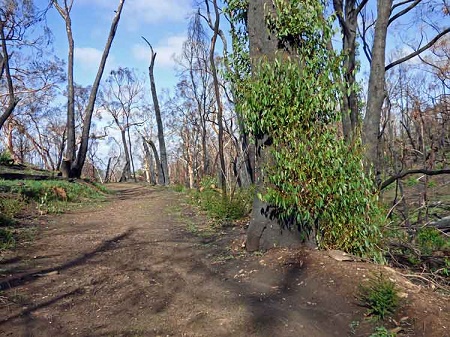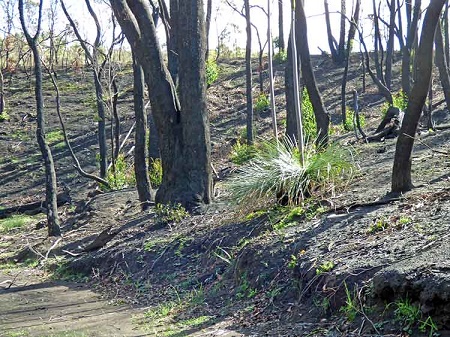Bushland Park, Lobethal, South Australia, Australia

range of flora and fauna, including Rare
Maiden Hair Ferns and Leafy Greenhood Orchids.
The Native Orchid Society has catalogued 33
species of native orchid (some of which were
thought to be extinct) within the Park.
There are up to 100 bird species and 270
indigenous (native) plant species.
15% of the flora are rare and vulnerable,
including some species that are not found
outside the park.
This information is provided courtesy of
The Friends of Bushland Park.
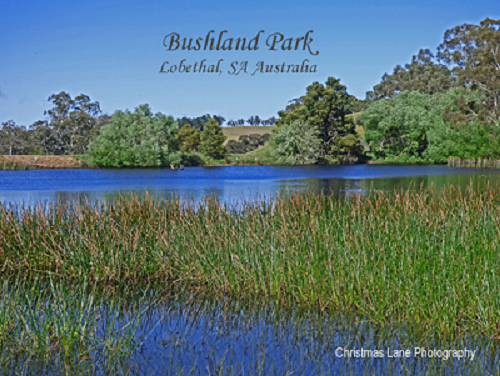
Bushland Park is located at Lobethal,
South Australia,
on the Kenton Valley Road.
It has a picnic area with a playground
overlooking a lake and walking trails
with a great deal of flora and fauna.
During the 19th and early 20th century, before
reticulated water was available to the towns in
the Onkaparinga Valley, two reservoirs in a
118 hectare property supplied water to the
town of Lobethal and its major industry,
the Onkaparinga Woolen Mills.
Early in 1982 the land was declared
surplus to the requirements of the
E & WS Department, and it was offered
to the District Council of Onkaparinga.
In December 1986 Lobethal Bushland Park
was officially opened by the Governor
Sir Donald B Dunstan.
Lobethal Bushland Park consists of two separate areas.
A Heritage Agreement Area
A Heritage Agreement forms a conservation contract to protect land.
Lobethal Bushland Park includes 83.65 hectares covered by Heritage
Agreement.
This means that certain activities are restricted including:-
The removal of native vegetation,
The introduction of non-indigenous vegetation,
The introduction of non-indigenous fauna (including pets),
The removal of wood or timber (whether standing or fallen, dead or
alive),
The removal or disturbance of rocks or soil (including cultivation)
,
The recreational use of trail bikes and other vehicles
And more.

A Recreation Area
A recreation area at the southern end of the park is exclude from the
Heritage Agreement
and includes a children's playground, barbeques and a community centre.
Dogs, on leads, are are permitted in this area only.




Photos - Bushland Park.
The following photos were taken 17th July 2012

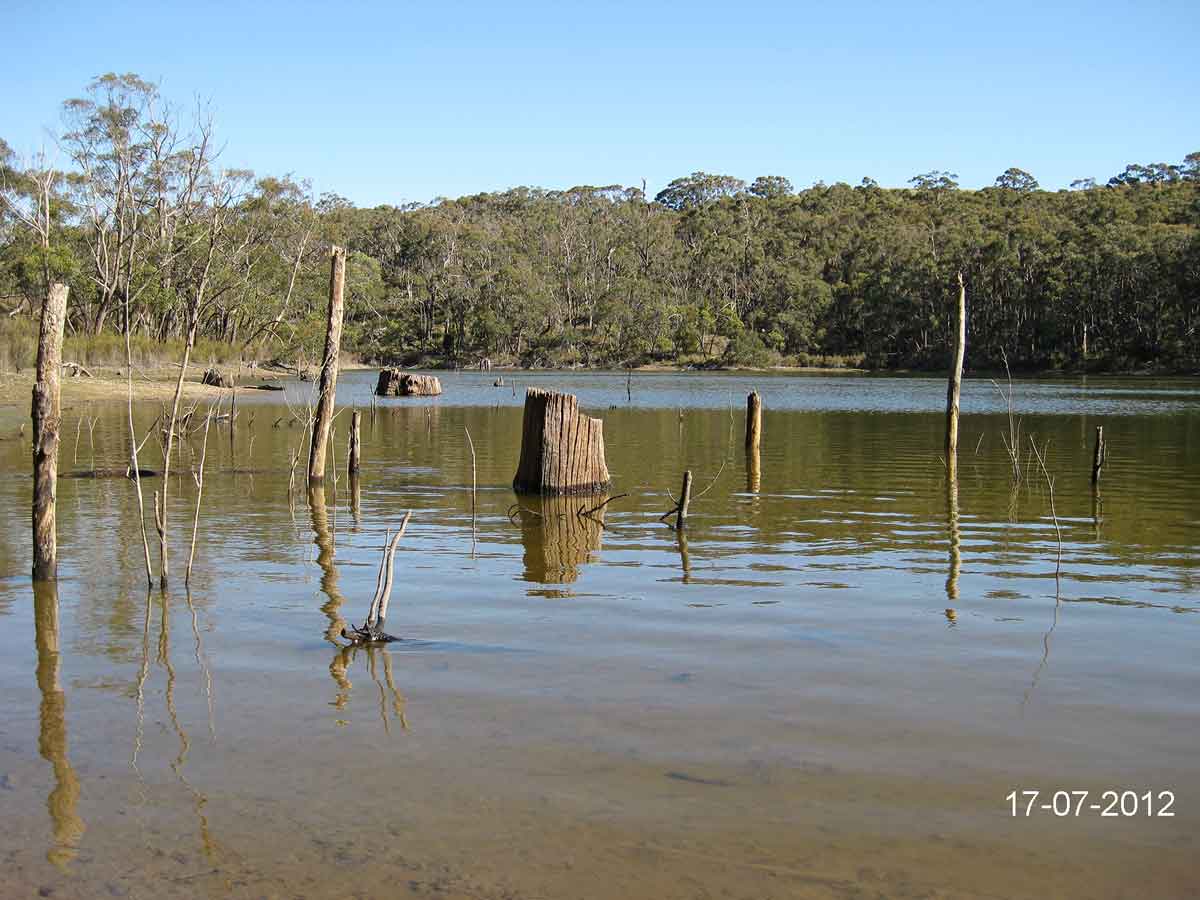
The top reservoir Bushland Park 2012 (Photo (©) - Peg & Bill Chartres' c ollection - 2012)
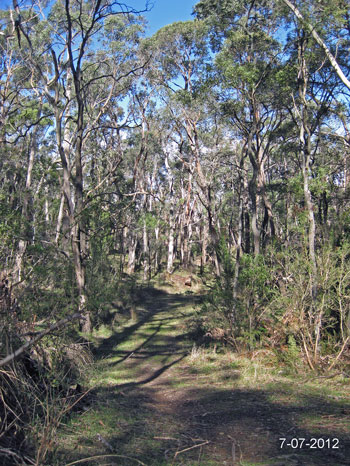
(Photo (©) - Peg & Bill Chartres' collection - 2012)

(Photo (©) - Peg & Bill Chartres' collection - 2012)

(Photo (©) - Peg & Bill Chartres' collection - 2012)

(Photo (©) - Peg & Bill Chartres' collection - 2012)

(Photo (©) - Peg & Bill Chartres' collection - 2012)
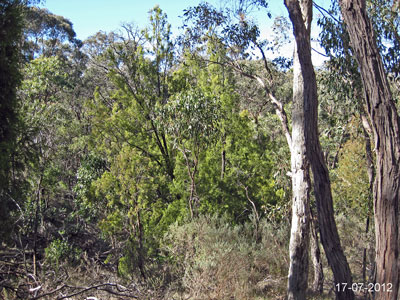
(Photo (©) - Peg & Bill Chartres' collection - 2012)
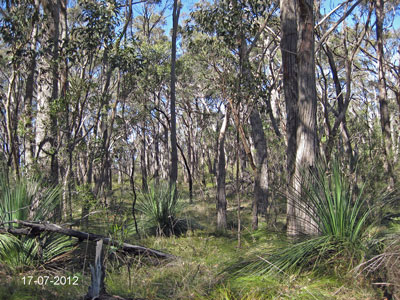
(Photo (©) - Peg & Bill Chartres' collection - 2012)
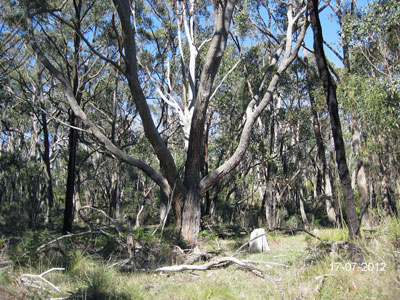
(Photo (©) - Peg & Bill Chartres' collection - 2012)

(Photo (©) - Peg & Bill Chartres' collection - 2012)
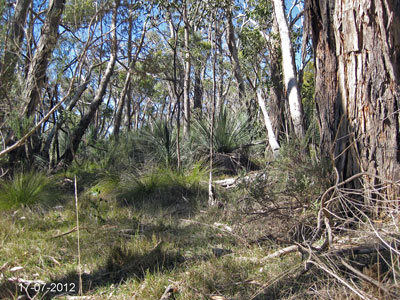
(Photo (©) - Peg & Bill Chartres' collection - 2012)


Photos - Bushland Park.
These photos were taken in 2016

The top reservoir Lobethal Bushland Park 2016
(Photo (©) - Peg & Bill Chartres' collection - 2016)

Purple cockatoo orchid
(Glossodia major)
(Photo (©) - Peg & Bill Chartres' collection - 2016)

Salmon Sun Orchid
(Thelymitra rubra)
(Photo (©) - Peg & Bill Chartres' collection - 2016

Australian Buttercup
(Ranunculus lappaceus)
(Photo (©) - Peg & Bill Chartres' collection - 2016

Wallflower donkey orchid
(Diuris orientis)
(Photo (©) - Peg & Bill Chartres' collection - 2016)

(Photo (©) - Peg & Bill Chartres' collection - 2016
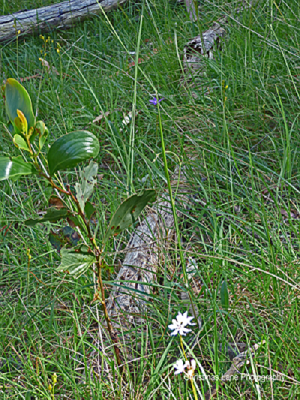
(Photo (©) - Peg & Bill Chartres' collection - 2016


On December 20th 2019 a disastrous bushfire destroyed Bushland Park
Sadly much of the flora and some fauna was destroyed.


(Photo (©) - Peg & Bill Chartres' collection - 2020
The reservoir near the Main Entrance 2020
On 20th December 2019 a catastrophic bushfire (wildfire) broke out at Cudlee Creek and quickly spread
a path of destruction
through Lobethal, Woodside, Lenswood, Mount Torrens, Charleston, and Harrogate a distance of about 15 km (nearly
10 miles), with a perimeter of about 130 km (over 80 miles).
Over 25,000 hectares (62,000 acres) were burnt with one person killed and 87 homes, nearly 500 other buildings,
hundreds of vehicles, crops, livestock and pets lost.
This fire completely devastated Lobethal Bushland Park.
The park was previously an unburnt remnant of native bushland.
The Adelaide Hills Council (the owner of the park) closed the park following the fire and organised a qualified
arborist to assess the damage then organised the making of the park safe by Council staff with the help of the
Australian Defense Force and Team Rubicon volunteers.
The park partially reopened mid-February and further work continued on trail markers, bridges,
boardwalks, and safety issues.
The children's playground and barbeques in the recreation area were also damaged by the fire and had to be removed.
It was expected that this work would take some months to complete, however the onset of the Corona Virus further
restricted the effort.
Rain during January and February helped the regeneration process with flora and fauna showing early signs of recovery.





These photos were taken on January 17th 2020
Four weeks after the fire destroyed the park

(Photo (©) - Peg & Bill Chartres' collection - 2020

(Photo (©) - Peg & Bill Chartres' collection - 2020)
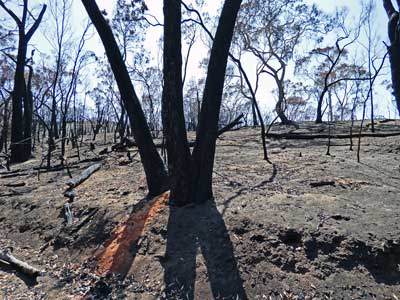
(Photo (©) - Peg & Bill Chartres' collection - 2020
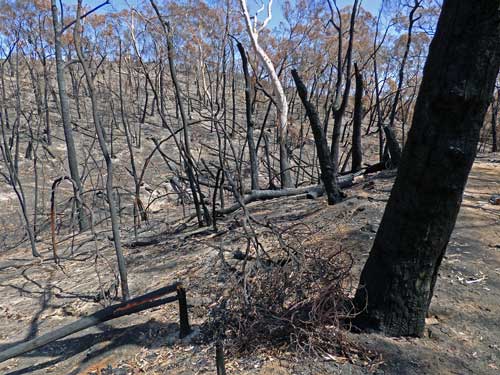
(Photo (©) - Peg & Bill Chartres' collection - 2020
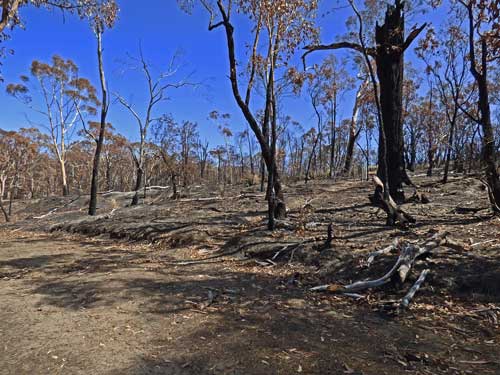
(Photo (©) - Peg & Bill Chartres' collection - 2020)
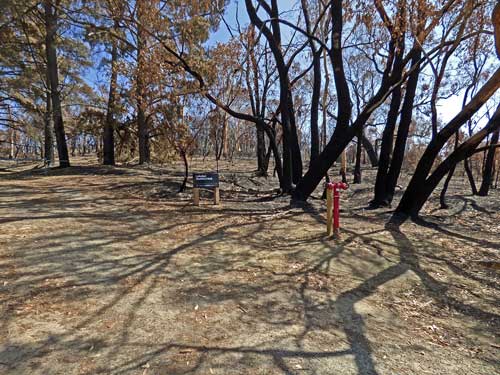
(Photo (©) - Peg & Bill Chartres' collection - 2020
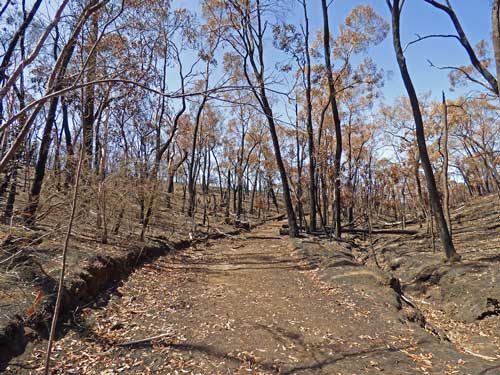
(Photo (©) - Peg & Bill Chartres' collection - 2020
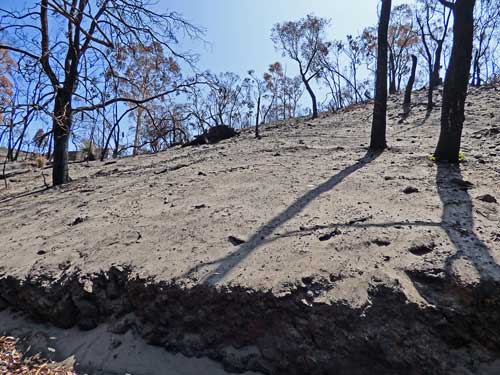
(Photo (©) - Peg & Bill Chartres' collection - 2020)
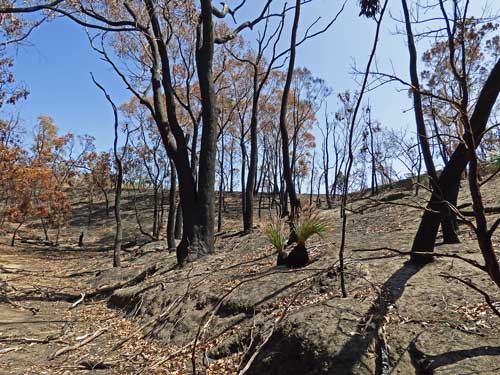
(Photo (©) - Peg & Bill Chartres' collection - 2020

(Photo (©) - Peg & Bill Chartres' collection - 2020

The Recovery of Burnt Trees
This information was sourced (edited) from the City of Whittlesea Bushfire Recovery fact sheet

Burnt trees – Will they re-grow?
In some cases trees will not regrow due to the extreme fire intensity experienced in a number of areas.
Generally, however, most trees, especially Eucalypts, are expected to regenerate in time as they have evolved
adaptations to withstand bushfires.

The following are examples of the various adaptations some native plants have evolved to
survive bushfires:
Epicormic buds
Trees with rough bark, such as Stringybark (Eucalyptus obliqua) have epicormic buds (dormant growth buds)
deep beneath the bark which are protected from fire.
When the tree is burnt and the foliage removed, the epicormic buds are triggered into lifeand they start to grow.
Once these buds sprout, the tree then begins to regrow all the lost foliage, and gradually recovers in time.
The first few leaves to sprout from these epicormic buds may look very different to the leaves that were on the tree
before it was burnt. These first few leaves are juvenile leaves and will soon be replaced by adult leaves which are
often larger.

Lignotubers
Some other eucalypts regenerate from underground lignotubers which are large roots from which the tree can sprout new
growth.
Although the above-ground part of the tree may not survive being burnt, the lignotuber and root-system remains alive.
These trees should be left alone as their removal will damage the lignotubers and may prevent the tree from successfully
regrowing.
In time, these trees will often develop multi-stem trunks and provide important habitat for local wildlife.

Regrowth
Other plants such as Grass Trees (Xanthorrhoea australis) have also developed ingenious ways to withstand
bushfires, including dense, fibrous trunks.
These plants simply reshoot and recover quite quickly. Many local landowners have remarked that tree ferns located
in gullies and along watercourses started to resprout only weeks after the fires. Many indigenous plants, including
Grass Trees, rely on fire to remove the build up of leaves and dead material.
Once burnt, flower-spikes, which will develop numerous seeds, are often the first sign that the Grass Tree is alive.

Seed storage – crown
Other plants may not survive bushfires but have instead developed ways to ensure that their species will still persist
into the future.
A number of smooth barked eucalypt species, rarely survive bushfires and have instead evolved other ways to regenerate
following fire.
Seeds stored in capsules (gum-nuts) in the tree canopy are released following fire, then germinate en-masse once
conditions become favourable, ensuring the survival of the species.

Seed storage – soil
Wattle trees (Acacia melanoxylon (Blackwood)) have developed seeds with hard coats which are stored in the leaf
litter and soil.
Many of these seeds have been buried underground by ants busily building up food stores to feed their colonies.
The heat of the fire cracks the seedcoats and triggers germination.
Many properties have experienced a carpet of tiny seedlings emerging from the blackened ground.
In time, these seedlings will thin themselves out naturally and gradually replace the mid-storey vegetation,
providing an important food source for local possums and birds as they recolonise bushfire affected areas.
Note:-
This Fact Sheet was prepared for the City of Whittlesea, north of Melbourne, Victoria, but is
also relevant to our area.

These two photos show the start of the recovery process in Lobethal Bushland Park.
Both photos were taken in the same area (different camera angle).
The first photo was taken 17th January and the second on 18th February 2020.
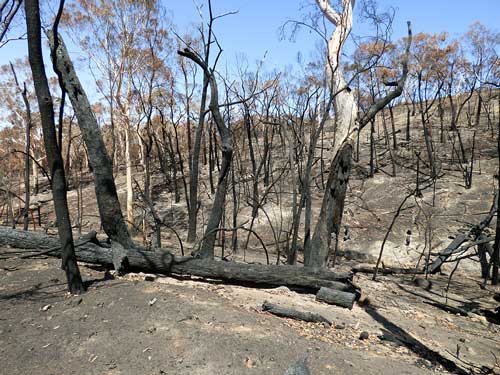
(Photo (©) - Peg & Bill Chartres' 17th January 2020)

(Photo (©) - Peg & Bill Chartres' 18th February 2020

Photos - Bushland Park.
About 8 weeks after the fire the park was showing signs of recovery.
These photos were taken 05/02/2020


(Photo (©) - Peg & Bill Chartres' collection - 2020)

(Photo (©) - Peg & Bill Chartres' collection - 2020)

(Photo (©) - Peg & Bill Chartres' collection - 2020)
The Xanthorrhoea (Grass Trees) were amongst the first to show signs of recovery...
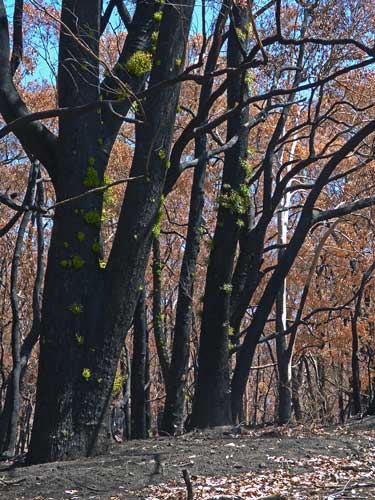
(Photo (©) - Peg & Bill Chartres' collection - 2020)
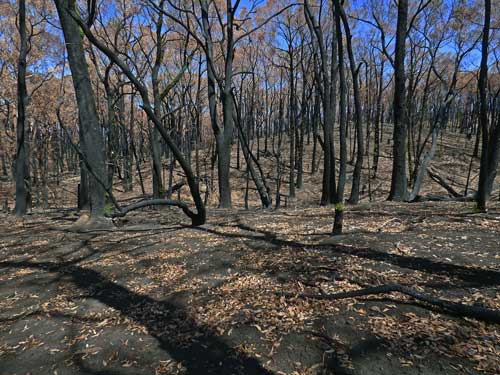
(Photo (©) - Peg & Bill Chartres' collection - 2020)
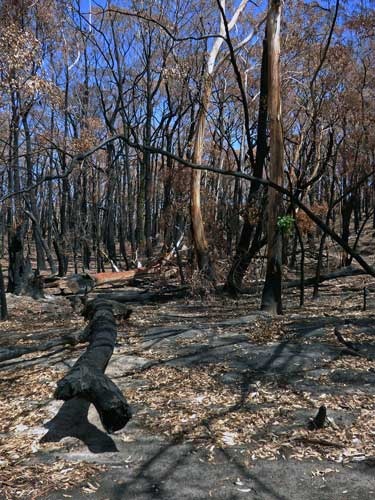
(Photo (©) - Peg & Bill Chartres' collection - 2020)
... with Eucalypts, Eucalyptus obliqua (Messmate Stringybark)...
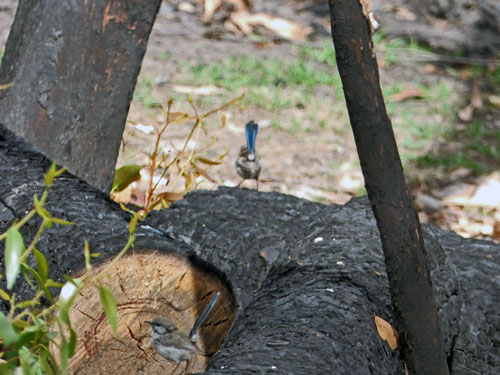
Blue Wrens
(Photo (©) - Peg & Bill Chartres' collection - 2020)

Pied Cormorant
(Photo (©) - Peg & Bill Chartres' collection - 2020)
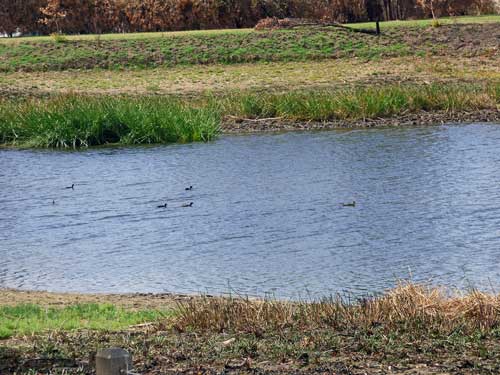
Ducks
(Photo (©) - Peg & Bill Chartres' collection - 2020)
...and birds soon following.

Photos - Bushland Park.
These photos, showing the continuing revegetation, were taken during February

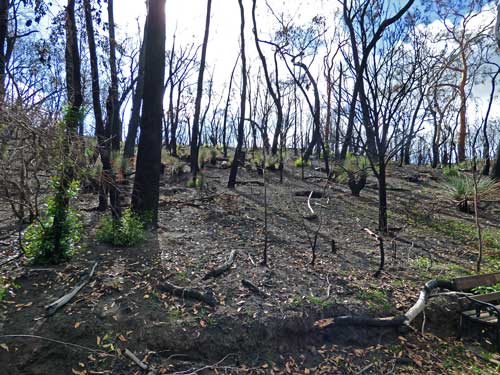
(Photo (©) - Peg & Bill Chartres' collection - 2020)
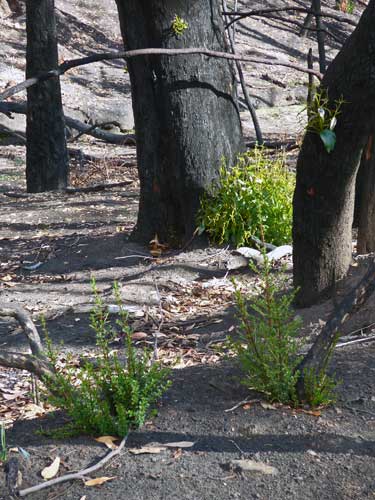
(Photo (©) - Peg & Bill Chartres' collection - 2020)
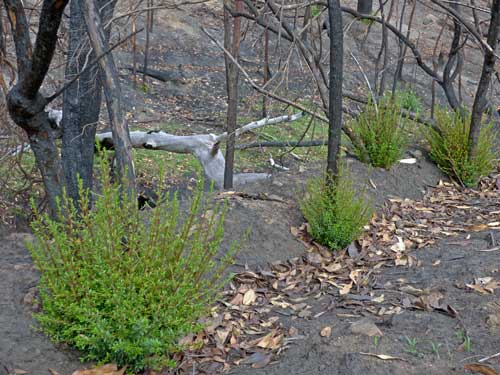
(Photo (©) - Peg & Bill Chartres' collection - 2020)
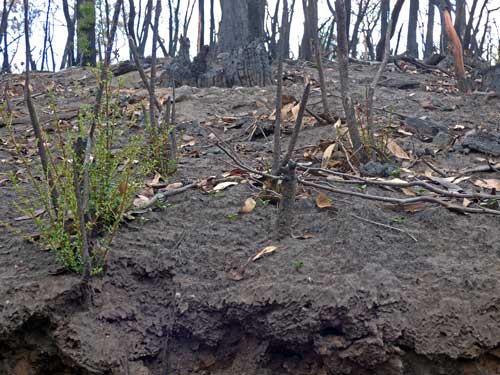
(Photo (©) - Peg & Bill Chartres' collection - 2020)
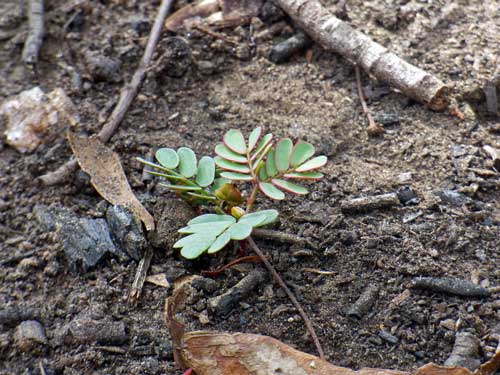
(Photo (©) - Peg & Bill Chartres' collection - 2020)

(Photo (©) - Peg & Bill Chartres' collection - 2020)

(Photo (©) - Peg & Bill Chartres' collection - 2020)
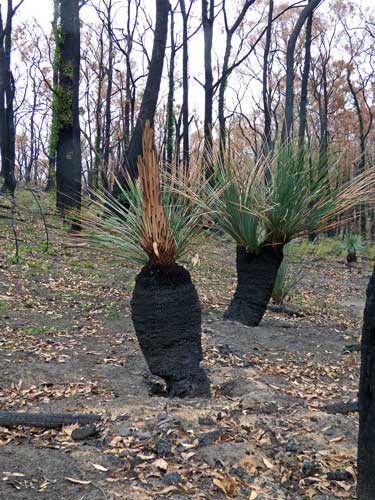
(Photo (©) - Peg & Bill Chartres' collection - 2020)
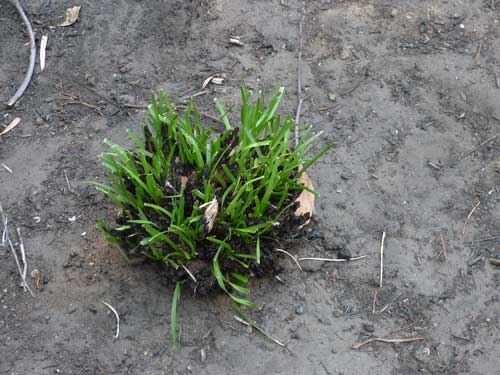
(Photo (©) - Peg & Bill Chartres' collection - 2020)

(Photo (©) - Peg & Bill Chartres' collection - 2020)

(Photo (©) - Peg & Bill Chartres' collection - 2020)
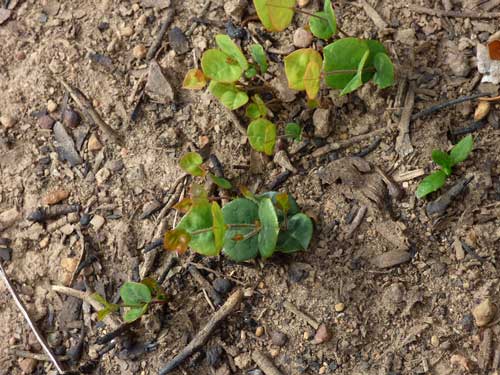
(Photo (©) - Peg & Bill Chartres' collection - 2020)

(Photo (©) - Peg & Bill Chartres' collection - 2020)
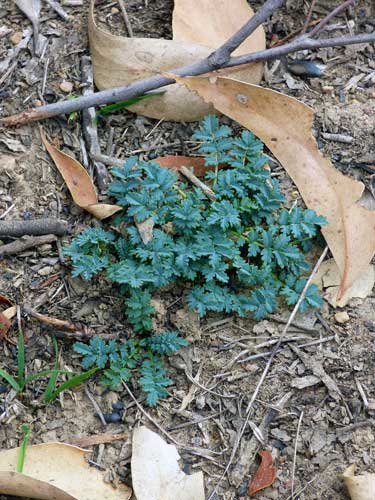
(Photo (©) - Peg & Bill Chartres' collection - 2020)
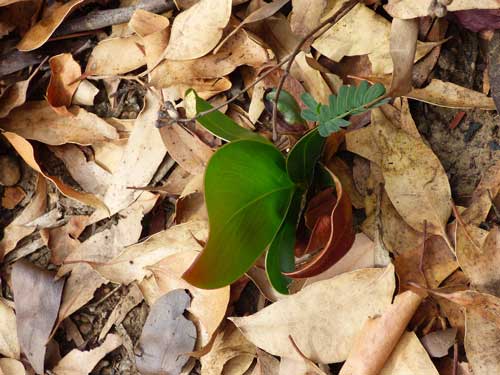
(Photo (©) - Peg & Bill Chartres' collection - 2020)
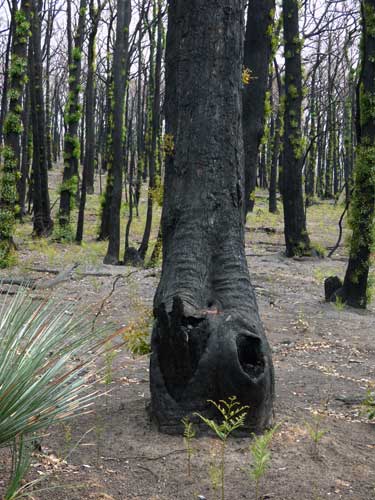
(Photo (©) - Peg & Bill Chartres' collection - 2020)
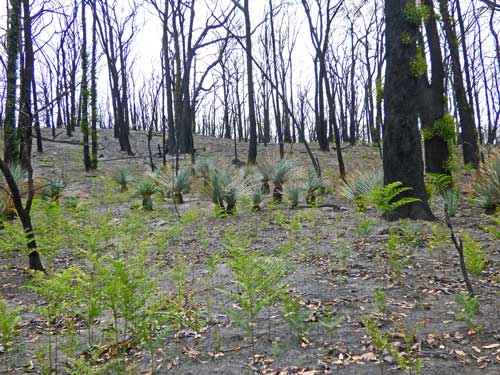
(Photo (©) - Peg & Bill Chartres' collection - 2020)
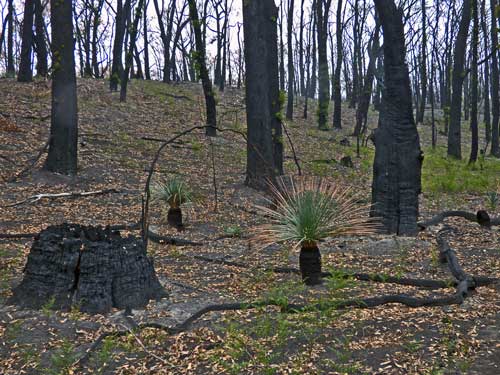
(Photo (©) - Peg & Bill Chartres' collection - 2020)

These photos, showing the continuing revegetation, were taken during March

Eleven weeks after the fire

(Photo (©) - Peg & Bill Chartres' collection - 2020)

(Photo (©) - Peg & Bill Chartres' collection - 2020)
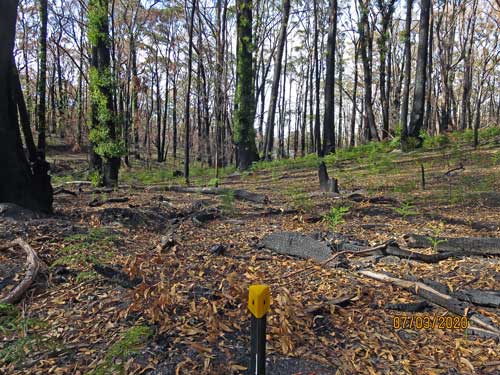
(Photo (©) - Peg & Bill Chartres' collection - 2020)
Generally Bracken Fern and Eucalypts are showing excellent signs of recovery

Thirteen weeks after the fire

(Photo (©) - Peg & Bill Chartres' collection - 2020)

(Photo (©) - Peg & Bill Chartres' collection - 2020)

(Photo (©) - Peg & Bill Chartres' collection - 2020)
Xanthorrhoea (Grass Trees)
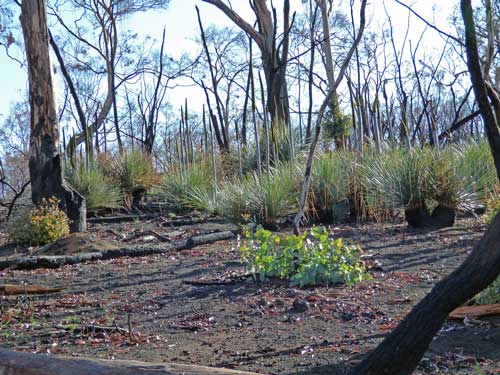
Grass Trees
(Photo (©) - Peg & Bill Chartres' collection - 2020)
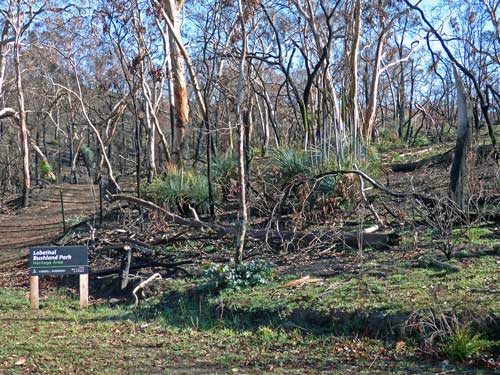
(Photo (©) - Peg & Bill Chartres' collection - 2020)
Grass Trees
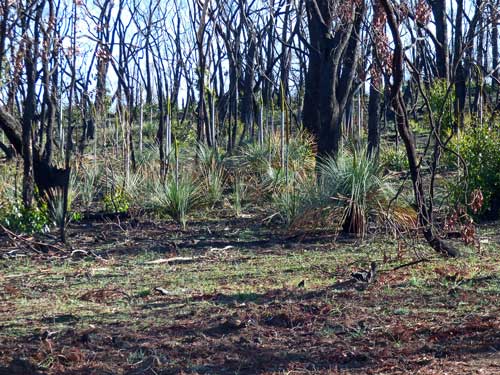
Grass Trees
(Photo (©) - Peg & Bill Chartres' collection - 2020)

"Burnt earth"
(Photo (©) - Peg & Bill Chartres' collection - 2020)

(Photo (©) - Peg & Bill Chartres' collection - 2020)
"Burnt earth"
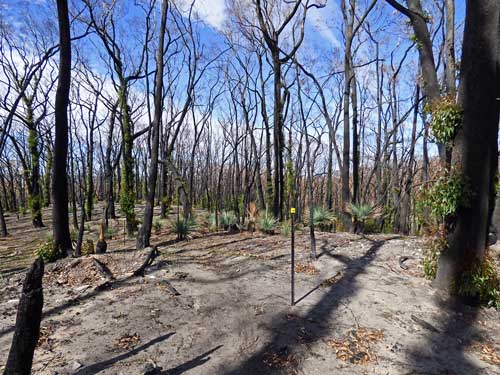
"Burnt earth"
(Photo (©) - Peg & Bill Chartres' collection - 2020)
Click and slide the blue slider to compare
two images both taken at the same location.
Refresh the page to activate the Blue Slider button
One photo was take 17th Jan 2020 and the other on 27th April 2020.
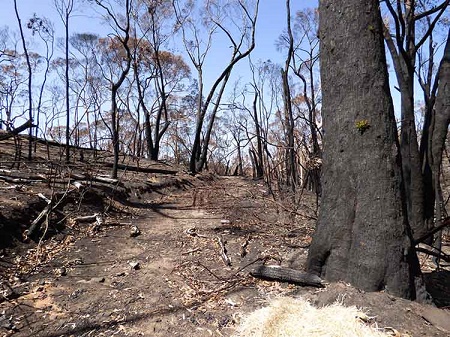
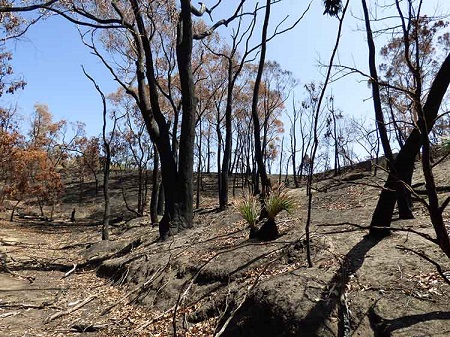
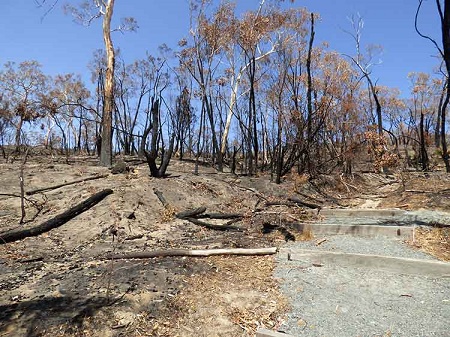

The following photos were taken on 5th May.

(Photo (©) - Peg & Bill Chartres' collection - May 2020)
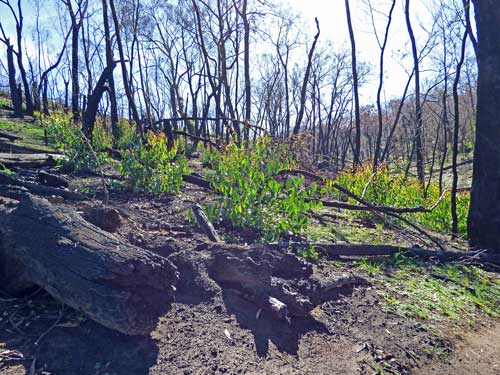
(Photo (©) - Peg & Bill Chartres' collection - May 2020)
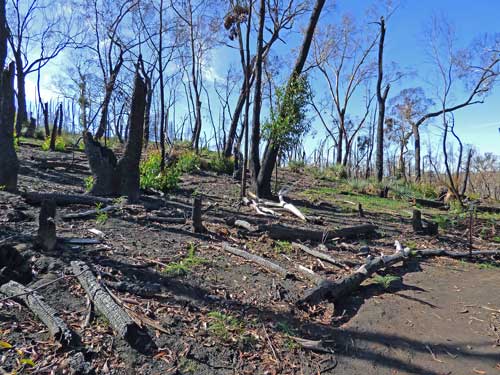
(Photo (©) - Peg & Bill Chartres' collection - May 2020)
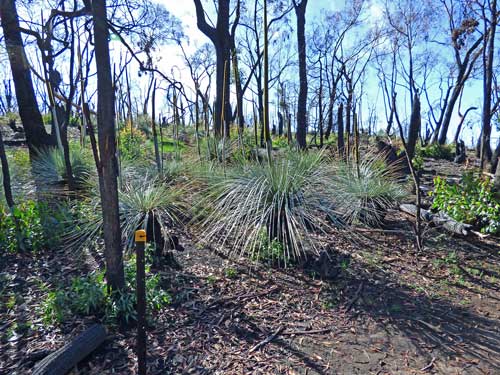
(Photo (©) - Peg & Bill Chartres' collection - May 2020)

(Photo (©) - Peg & Bill Chartres' collection - May 2020)
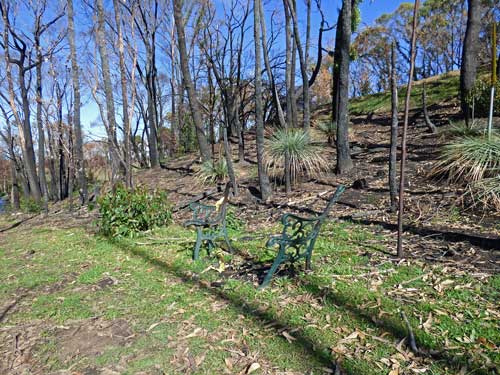
(Photo (©) - Peg & Bill Chartres' collection - May 2020)
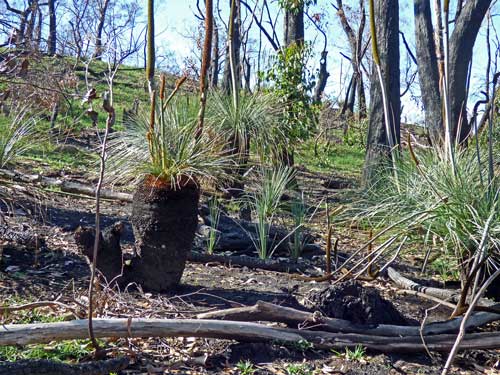
(Photo (©) - Peg & Bill Chartres' collection - May 2020)

(Photo (©) - Peg & Bill Chartres' collection - May 2020)
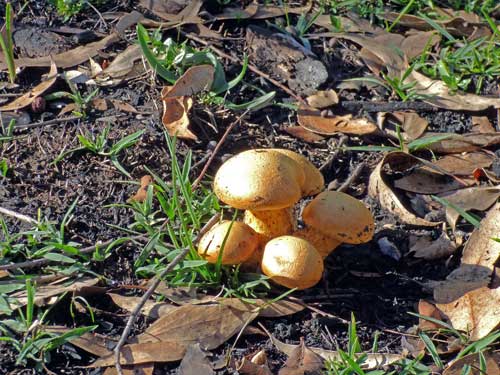
(Photo (©) - Peg & Bill Chartres' collection - May 2020)
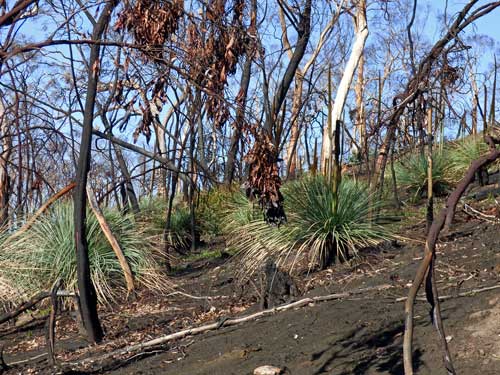
(Photo (©) - Peg & Bill Chartres' collection - May 2020)

(Photo (©) - Peg & Bill Chartres' collection - May 2020)


The following photos were taken on 15th May.

(Photo (©) - Peg & Bill Chartres' collection - May 2020)
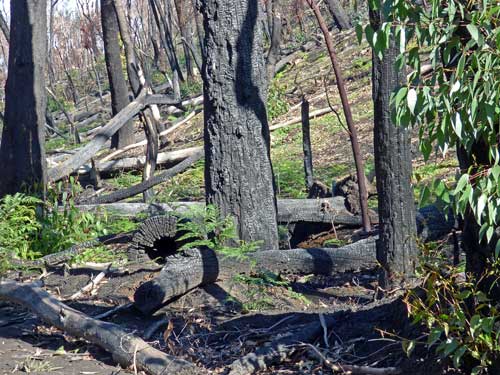
(Photo (©) - Peg & Bill Chartres' collection - May 2020)
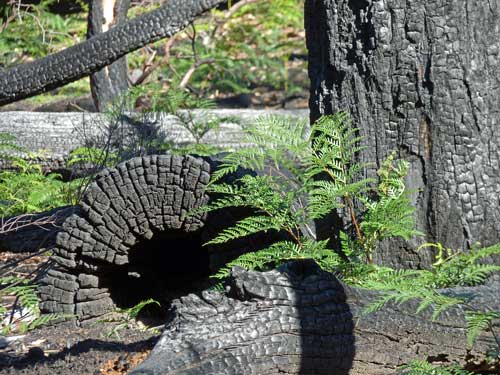
(Photo (©) - Peg & Bill Chartres' collection - May 2020)

(Photo (©) - Peg & Bill Chartres' collection - May 2020)

(Photo (©) - Peg & Bill Chartres' collection - May 2020)
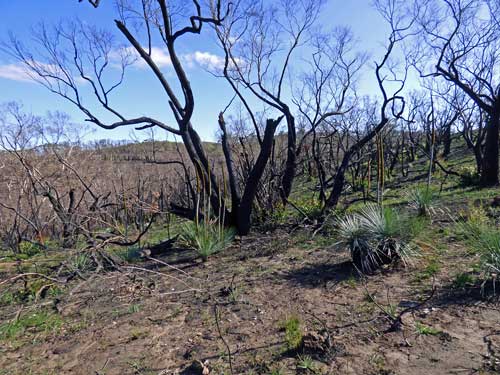
(Photo (©) - Peg & Bill Chartres' collection - May 2020)
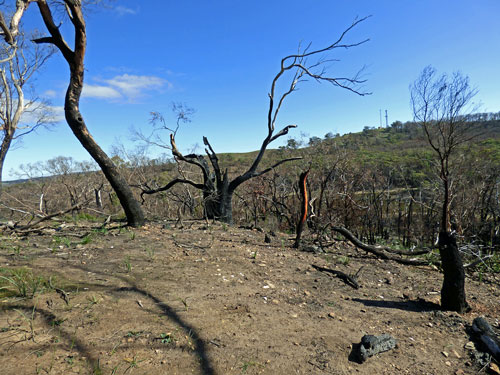
(Photo (©) - Peg & Bill Chartres' collection - May 2020)

Native Cherry
Exocarpos cupressiformis
(Photo (©) - Peg & Bill Chartres' collection - May 2020)
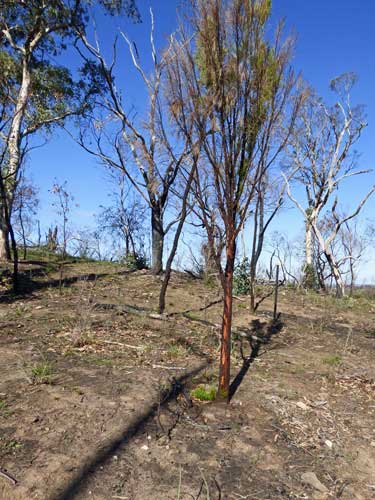
Native Cherry
Exocarpos cupressiformis
(Photo (©) - Peg & Bill Chartres' collection - May 2020)
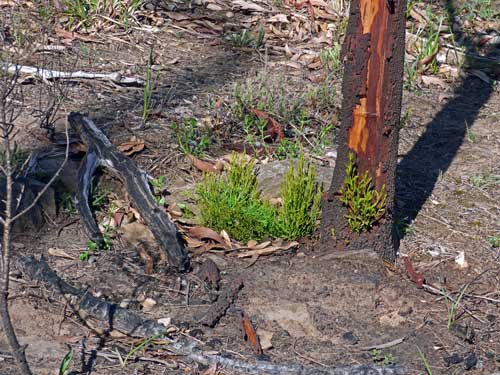
Native Cherry
Exocarpos cupressiformis
(Photo (©) - Peg & Bill Chartres' collection - May 2020)
The Native Cherry is an interesting tree
Find out more
HERE

The following photos were taken during June 2020.
June 3rd 2020
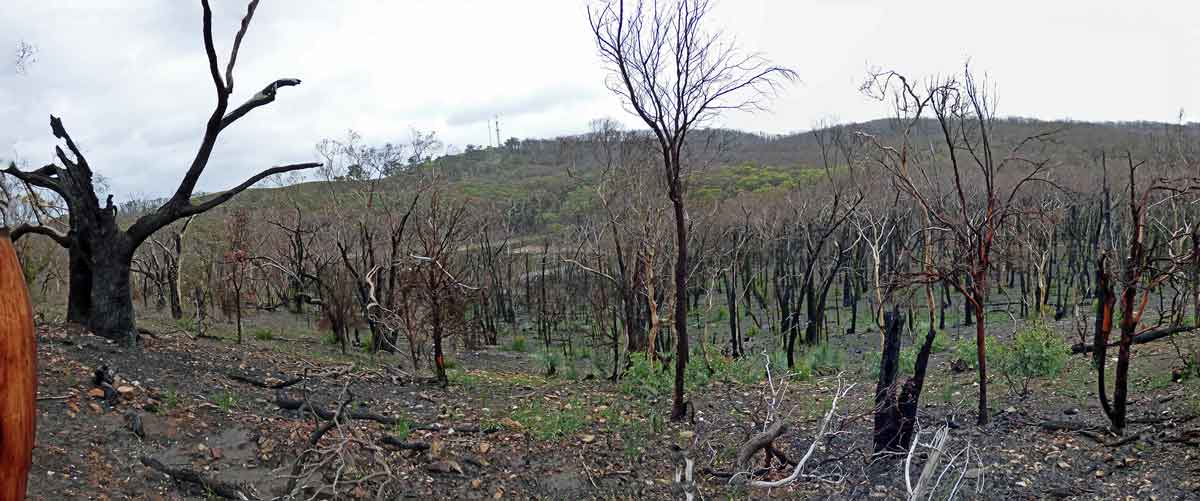
Revegetation overlooking the top reservoir.
The green area behind the reservoir is the area where a "Cool Burn" was carried out about 18 months before the fire,
this area didn't experience the severe burn that
the rest of the park had.
(Photo (©) - Peg & Bill Chartres' collection - June 2020)
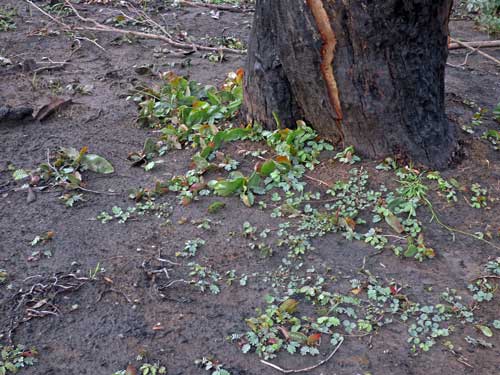
(Photo (©) - Peg & Bill Chartres' collection - June 2020)
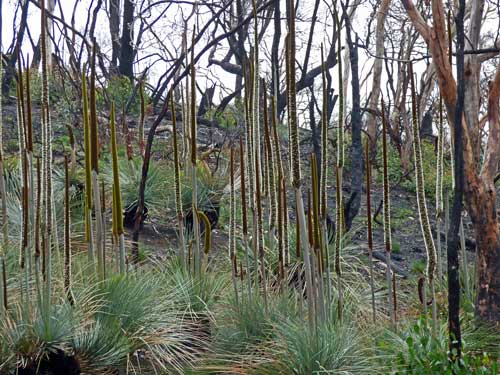
Grass Trees
Xanthorroea australis
(Photo (©) - Peg & Bill Chartres' collection - June 2020)

(Photo (©) - Peg & Bill Chartres' collection - June 2020)
By June 2020 Lobethal Bushland Park was beginning to real signs of recovery from
the Cudlee Creek Bushfire.
many of the trees were slowly recovering, the Bracken Fern had reestablished in
large areas and native flora had begun to flower.
The following photos were taken June/July 2020

(Photo (©) - Peg & Bill Chartres' collection - July 2020)
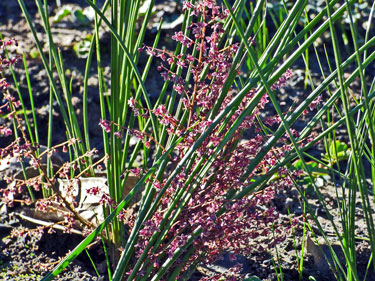
(Photo (©) - Peg & Bill Chartres' collection - July 2020)
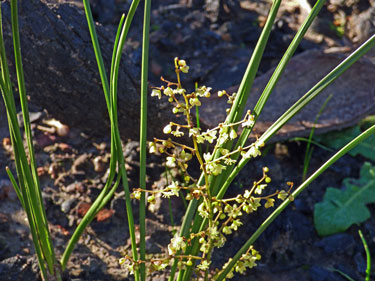
(Photo (©) - Peg & Bill Chartres' collection - July 2020)
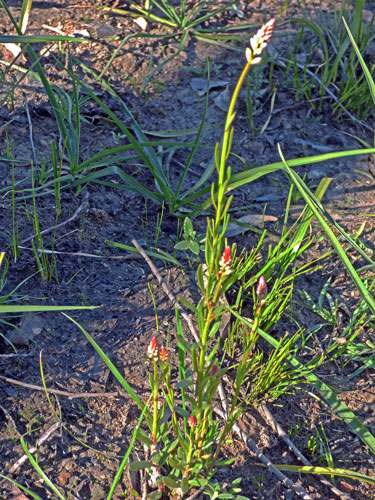
(Photo (©) - Peg & Bill Chartres' collection - July 2020)
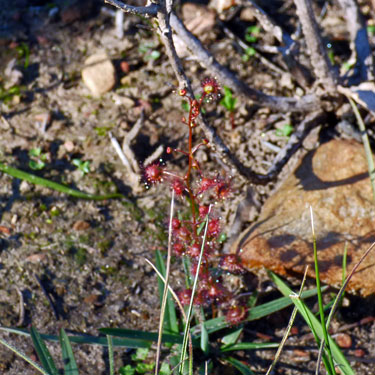
Climbing Sundew
(Drosera macrantha)
(Photo (©) - Peg & Bill Chartres' collection - July 2020)

Climbing Sundew
(Drosera macrantha)
(Photo (©) - Peg & Bill Chartres' collection - July 2020)
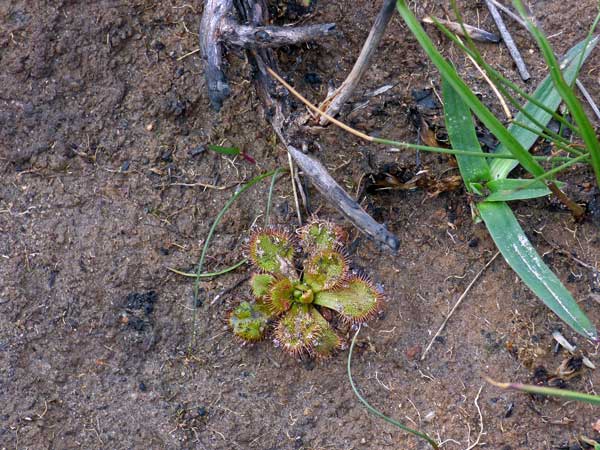
Scented sundew
(Drosera whittakeri)
(Photo (©) - Peg & Bill Chartres' collection - 2020)
The following photos were taken September 11th 2020


(Photo (©) - Peg & Bill Chartres' collection - September 2020)

Spotted donkey orchid
(Diuris pardina)
(Photo (©) - Peg & Bill Chartres' collection - September 2020)
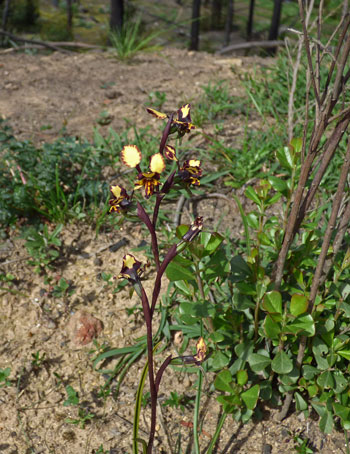
Spotted donkey orchid
(Diuris pardina)
(Photo (©) - Peg & Bill Chartres' collection - September 2020)
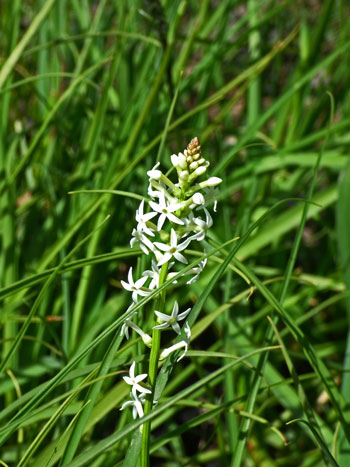
)
(Photo (©) - Peg & Bill Chartres' collection - September 2020)

Slender Bitter Pea
(Daviesia leptophylla)
(Photo (©) - Peg & Bill Chartres' collection - September 2020)
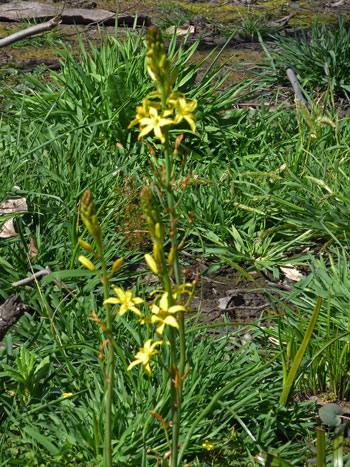
Native leek (Bulbine lily)
(Bulbine bulbosa)
(Photo (©) - Peg & Bill Chartres' collection - September 2020)

(Photo (©) - Peg & Bill Chartres' collection - September 2020)

(Photo (©) - Peg & Bill Chartres' collection - September 2020)

(Photo (©) - Peg & Bill Chartres' collection - September 2020)

Dwarf Greenhoods
(Pterostylis nana)
(Photo (©) - Peg & Bill Chartres' collection - September 2020)
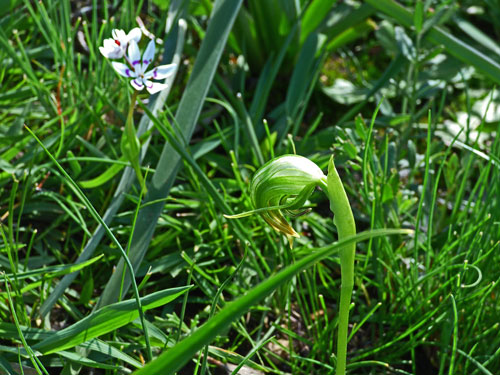
Dwarf Greenhood (Pterostylis nana)
& Early star lily (Wurmbea dioica)
(Photo (©) - Peg & Bill Chartres' collection - September 2020)
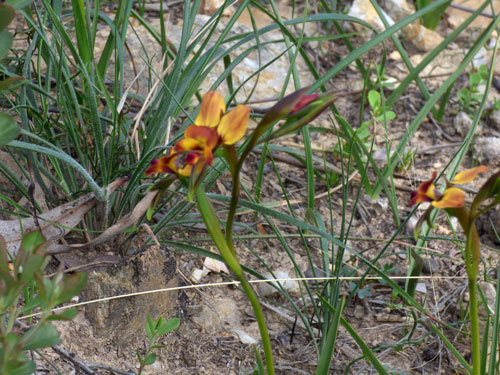
Wallflower donkey orchid
(Diuris orientis)
(Photo (©) - Peg & Bill Chartres' collection - September 2020)

Native leek (Bulbine lily)
(Bulbine bulbosa)
(Photo (©) - Peg & Bill Chartres' collection - September 2020)
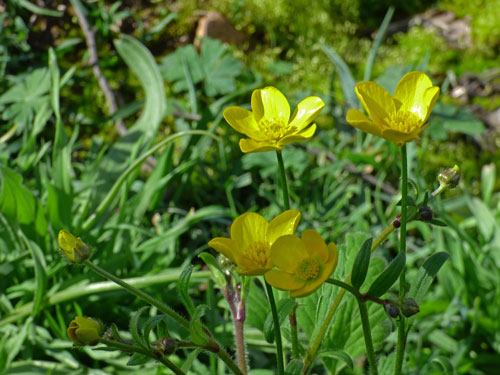
Australian Buttercup
(Ranunculus lappaceus)
(Photo (©) - Peg & Bill Chartres' collection - September 2020)
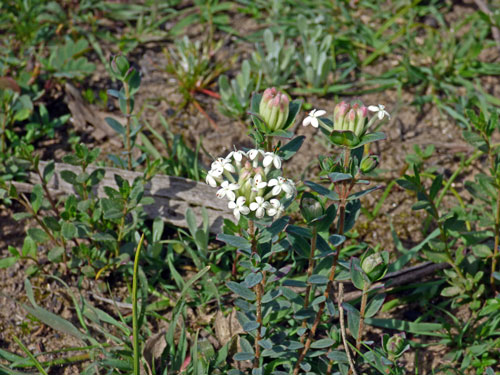
Common Rice-flower
(Pimelea humilis)
(Photo (©) - Peg & Bill Chartres' collection - September 2020)
The following photos were taken during October 2020


Recreation Area Southern Dam
(Photo (©) - Peg & Bill Chartres' collection - October 2020)
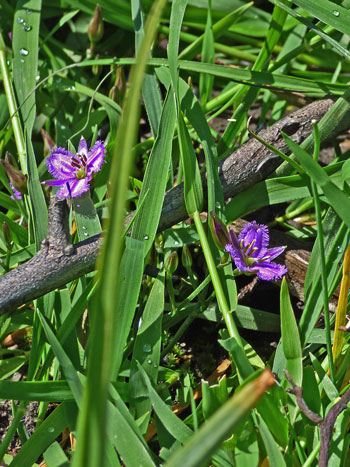
()
(Photo (©) - Peg & Bill Chartres' collection - October 2020)
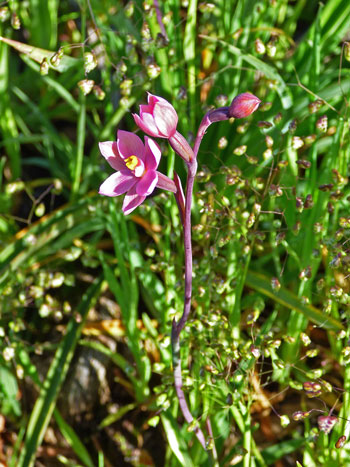
Salmon Sun Orchid
(Thelymitra rubra)
(Photo (©) - Peg & Bill Chartres' collection - October 2020)
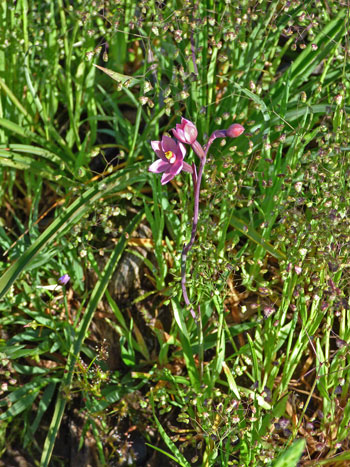
Salmon Sun Orchid
(Thelymitra rubra)
(Photo (©) - Peg & Bill Chartres' collection - October 2020)
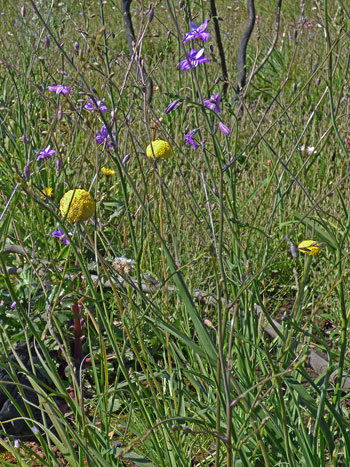
(Photo (©) - Peg & Bill Chartres' collection - October 2020)
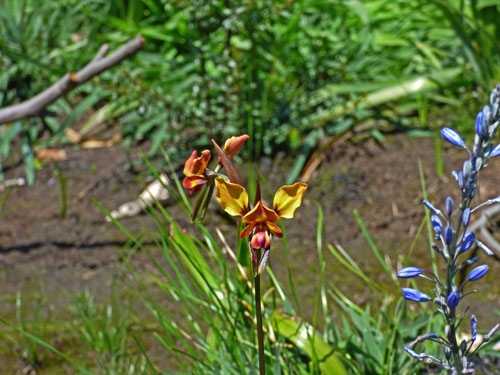
Wallflower Donkey Orchid
(Diuris orientis)
(Photo (©) - Peg & Bill Chartres' collection - October 2020)

Large Green-comb Spider Orchid
(Caladenia tentaculata)
(Photo (©) - Peg & Bill Chartres' collection - October 2020)

Hare Orchid
(Leptoceras menziesii)
(Photo (©) - Peg & Bill Chartres' collection - October 2020)
The following photos were taken during November 2020

November 2nd

Beginning of the Yulti Batta Track
(Photo (©) - Peg & Bill Chartres' collection - November 2020)
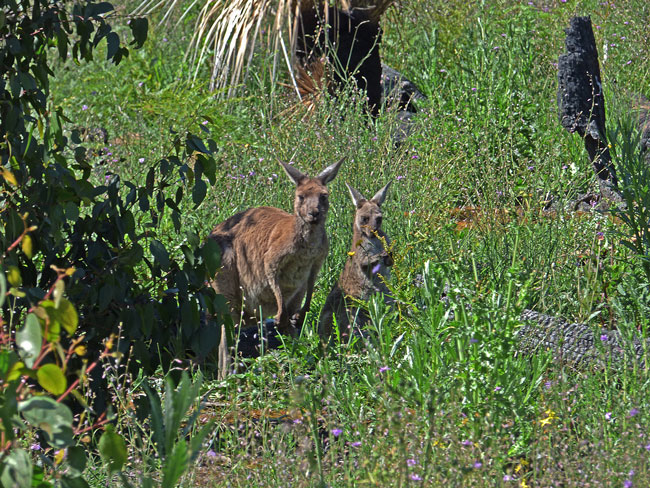
Kangaroos Yulti Batta Track
(Photo (©) - Peg & Bill Chartres' collection - November 2020)

Mount Lofty Daisy Bush
(Olearia grandiflora)
(Photo (©) - Peg & Bill Chartres' collection - November 2020)
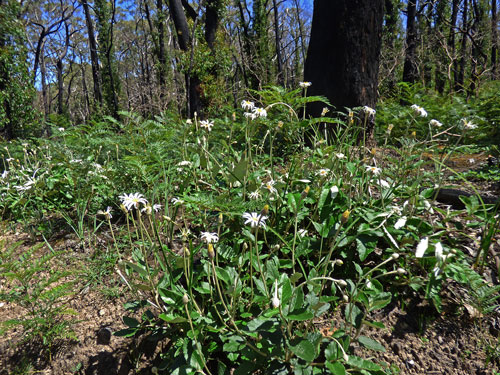
Mount Lofty Daisy Bush
(Olearia grandiflora)
(Photo (©) - Peg & Bill Chartres' collection - November 2020)
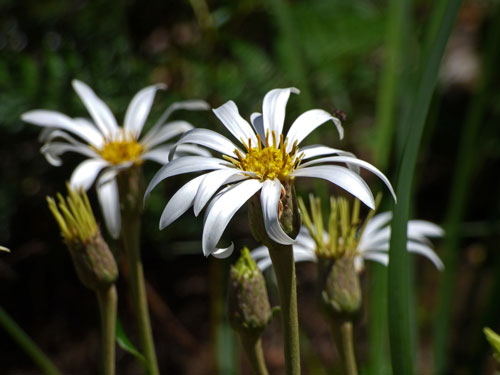
Mount Lofty Daisy Bush
(Olearia grandiflora)
(Photo (©) - Peg & Bill Chartres' collection - November 2020)
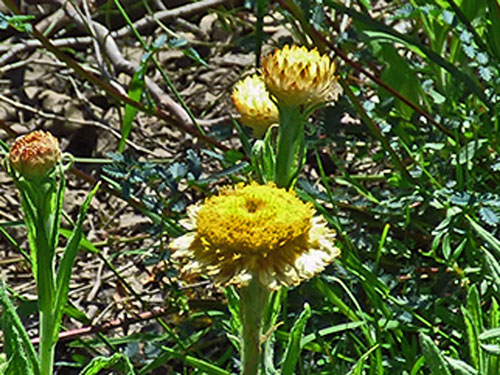
Button Everlasting
(Helichrysum scorpioides)
(Photo (©) - Peg & Bill Chartres' collection - November 2020)
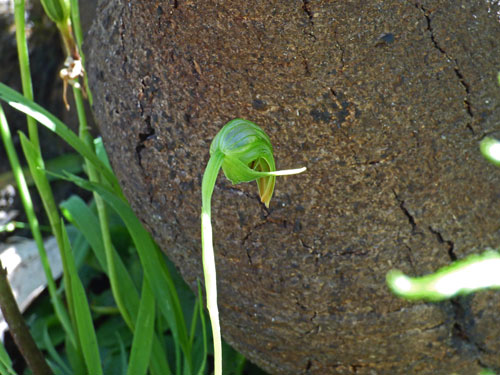
Nodding Greenhood Orchid
(Pterostylis Nutans)
(Photo (©) - Peg & Bill Chartres' collection - November 2020)
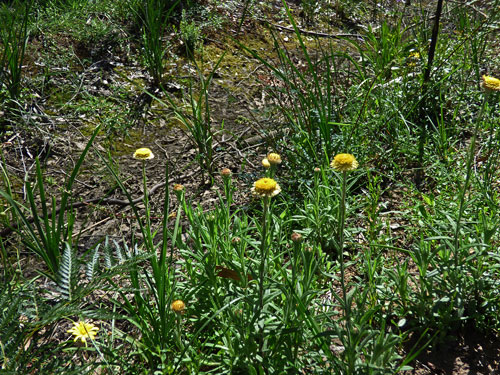
Button Everlasting
(Helichrysum scorpioides)
(Photo (©) - Peg & Bill Chartres' collection - November 2020)
LOBETHAL BUSHLAND PARK - Recovery
Comparison of various areas
January 2020 and January 2021.
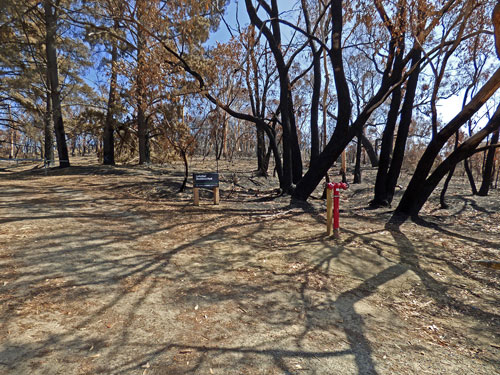
January 2020
(Photo (©) - Peg & Bill Chartres' collection - 2020)

January 2021
(Photo (©) - Peg & Bill Chartres' collection - 2021)
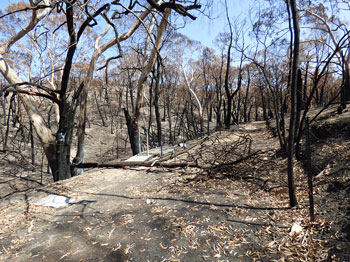
January 2020
(Photo (©) - Peg & Bill Chartres' collection - 2020)

January 2021
(Photo (©) - Peg & Bill Chartres' collection - 2021)

January 2020
(Photo (©) - Peg & Bill Chartres' collection - 2020)

January 2021
(Photo (©) - Peg & Bill Chartres' collection - 2021)

January 2020
(Photo (©) - Peg & Bill Chartres' collection - 2020)

January 2021
(Photo (©) - Peg & Bill Chartres' collection - 2021)

January 2020
(Photo (©) - Peg & Bill Chartres' collection - 2020)

January 2021
(Photo (©) - Peg & Bill Chartres' collection - 2021)
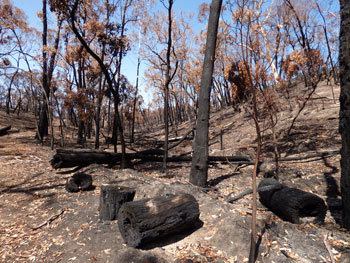
January 2020
(Photo (©) - Peg & Bill Chartres' collection - 2020)

January 2021
(Photo (©) - Peg & Bill Chartres' collection - 2021)
LOBETHAL BUSHLAND PARK - BIRDS
Nearly 100 different bird species have been recorded in Lobethal Bushland Park.
The following photos were contributed by Lindsay Ames 2020

Scarlet Robin
(Petroica boodang Petroicidae)
(Photo Courtesy - Linsay Ames - May 2020)
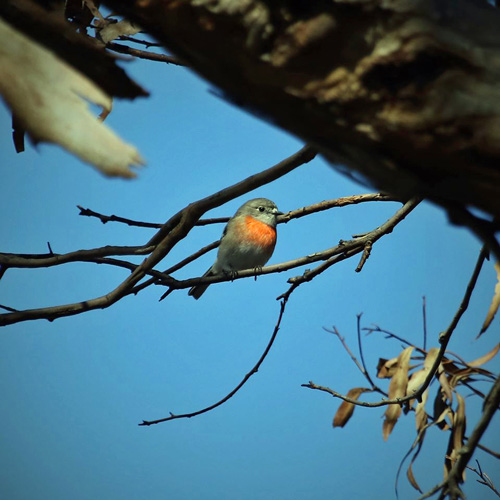
Female Scarlet Robin
(Petroica boodang Petroicidae)
(Photo Courtesy - Linsay Ames - May 2020)
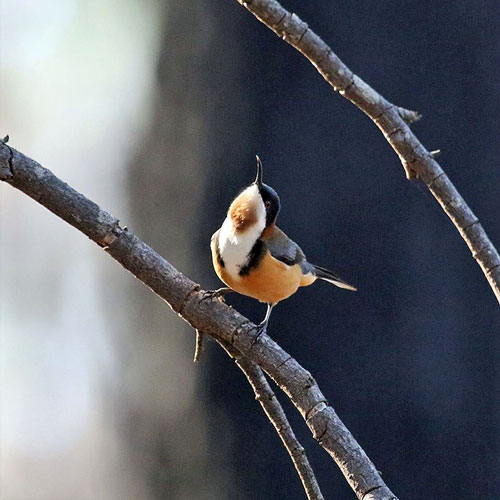
Eastern Spinebill
(Acanthorhynchus tenuirostris Meliphagidae)
(Photo Courtesy - Linsay Ames - May 2020)
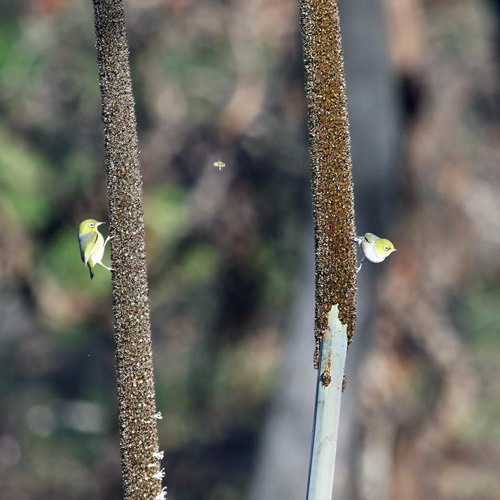
Silver Eyes (and Bee)
(Zosterops lateralis Timaliidae)
(Photo Courtesy - Linsay Ames - May 2020)
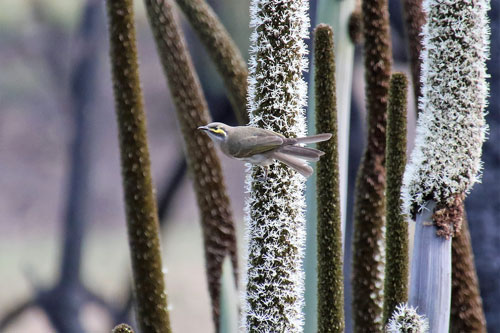
Yellow-faced Honeyeater
(Lichenostomus chrysops Meliphagidae)
(Photo Courtesy - Linsay Ames - May 2020)
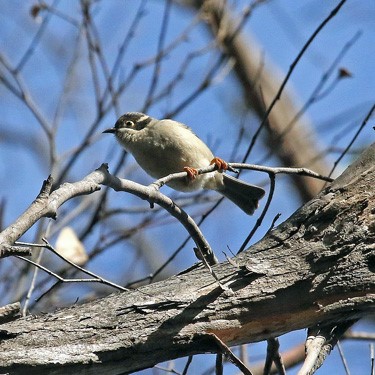
Brown-headed Honeyeater
(Melithreptus brevirostris Meliphagidae)
(Photo Courtesy - Linsay Ames - June 2020)
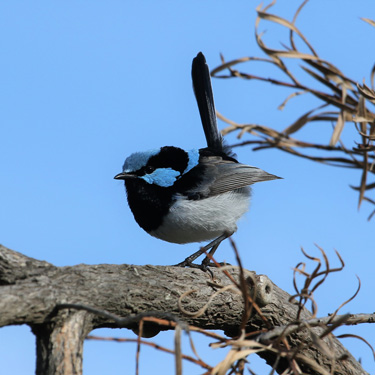
Male Superb Fairy-wren
(Malurus cyaneus Maluridae)
(Photo Courtesy - Linsay Ames - June 2020)
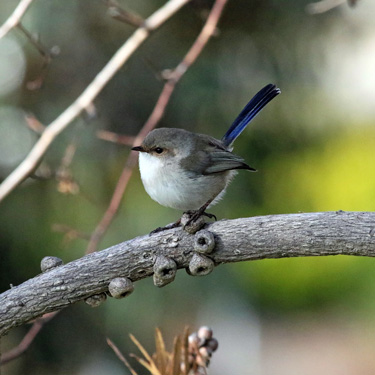
Male Superb Fairy-wren eclipse
(Malurus cyaneus Maluridae)
(eclipse "non-breeding colour")
(Photo Courtesy - Linsay Ames - June 2020)
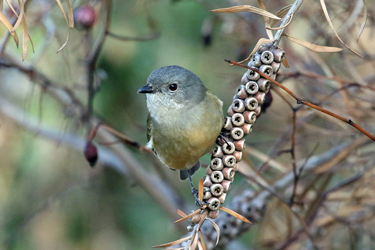
Female Golden Whistler
(Pachycephala pectoralis Pachycephalidae)
(Photo Courtesy - Linsay Ames - June 2020)

Striated Thornbill
(Acanthiza lineata Acanthizidae)
(Photo Courtesy - Linsay Ames - June 2020)

Australasian Darter
Anhinga novaehollandiae Anhingidae)
(Photo Courtesy - Linsay Ames - June 2020)
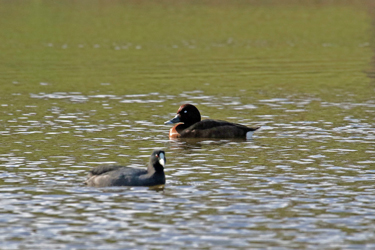
Hardhead
Aythya australis Anatidae)
(Photo Courtesy - Linsay Ames - June 2020)
Lobethal Bushland Park
BIRD descriptions
LOBETHAL BUSHLAND PARK - NATIVE ORCHIDS
The Native Orchid Society has catalogued 33 species of native orchid
some of which were thought to be extinct of which the Leafy Greenhood is one.
The Friends of Lobethal Bushland Park group is involved in helping preserve these orchids.
The following photos were contributed by Lindsay Ames May 2020

Midge Orchid
(Corunastylus sp.)
(Photo Courtesy - Linsay Ames - May 2020)
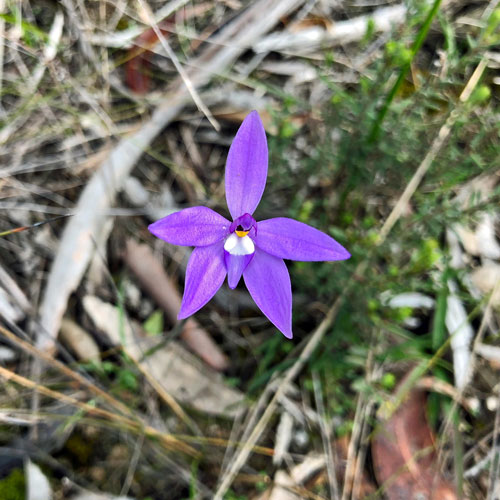
Cockatoo Orchid
(Glossodia major)
(Photo Courtesy - Linsay Ames - May 2020)

Midge Orchid
(Corunastylus sp.)
(Photo Courtesy - Linsay Ames - May 2020)
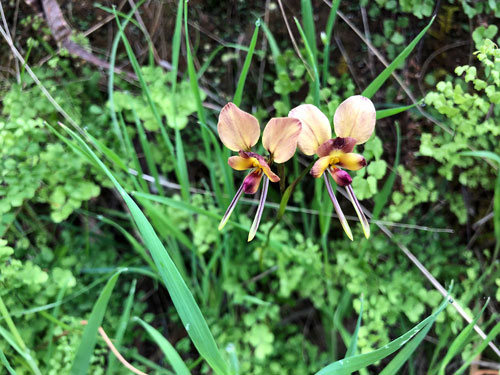
Wallflower Donkey Orchids
(Diuris orientis)
(Photo Courtesy - Linsay Ames)
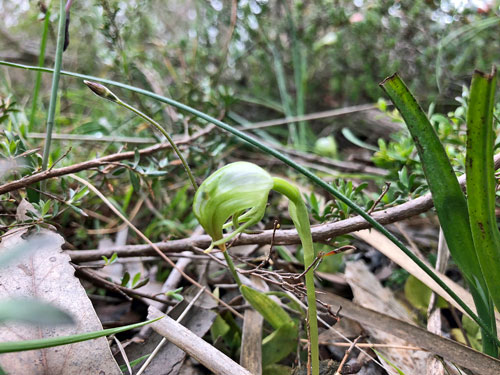
Nodding Greenhood Orchid
(Pterostylis Nutans)
(Photo Courtesy - Linsay Ames)
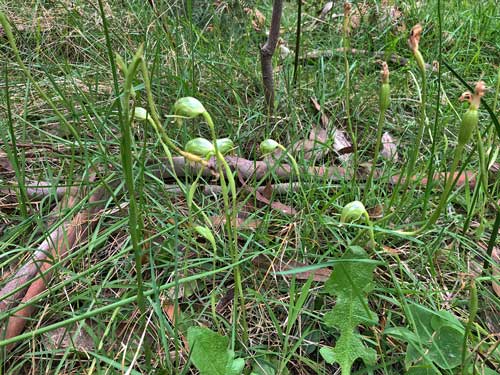
Nodding Greenhood Orchids
(Pterostylis Nutans)
(Photo Courtesy - Linsay Ames)
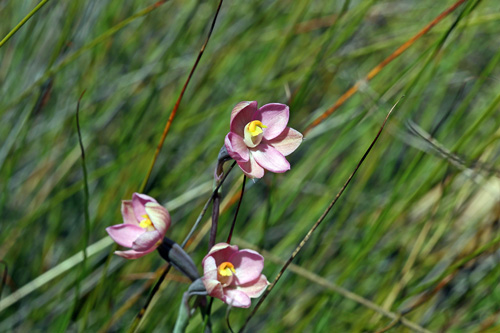
Salmon Sun Orchid
(Thelymitra rubra)
(Photo Courtesy - Linsay Ames - Oct 2019)
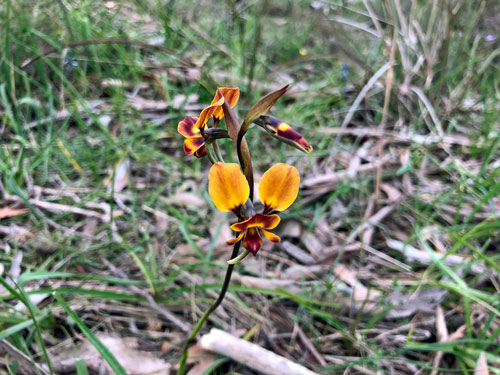
Wallflower Donkey Orchid
(Diuris orientis)
(Photo Courtesy - Linsay Ames)

Blue-spotted Sun Orchid
(Thleymitra Ixiodes)
(Photo Courtesy - Linsay Ames - Oct 2019)
 This page designed and maintained by Bill Chartres
This page designed and maintained by Bill Chartres
Please email any comments
Email Bill
Last updated 3:00PM 7th february 2022
